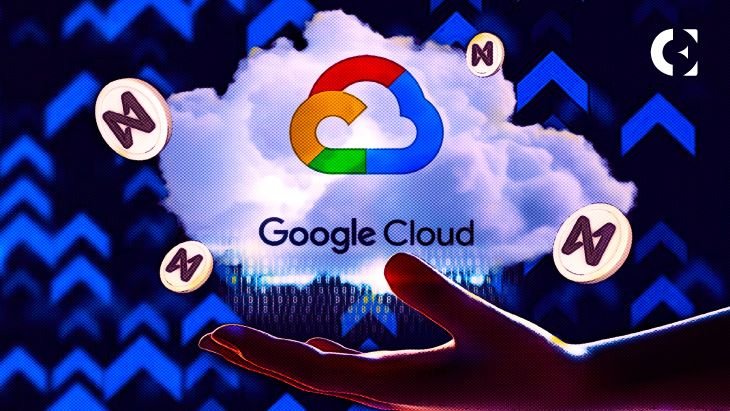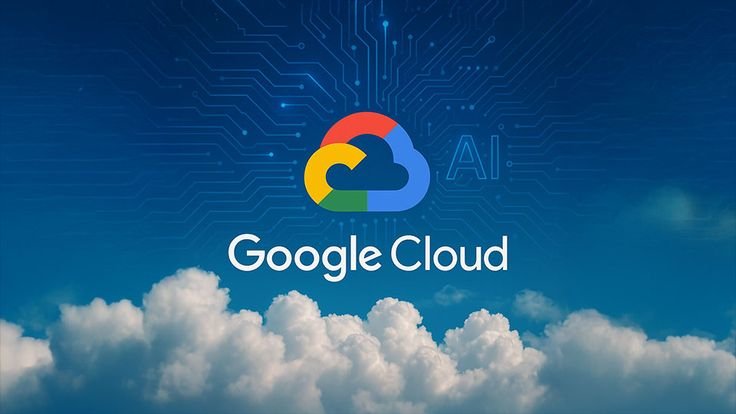| Service Category | Examples | Purpose | Key Features |
|---|---|---|---|
| Compute | Compute Engine, App Engine, Kubernetes Engine | Run virtual machines, containerized apps | Scalability, auto-scaling, flexible pricing |
| Storage & Databases | Cloud Storage, Cloud SQL, Bigtable, Firestore | Store and manage structured/unstructured data | Redundancy, encryption, high availability |
| Networking | VPC, Cloud Load Balancing, Cloud CDN, Cloud Interconnect | Manage network traffic and security | Global network, DDoS protection, low latency |
| AI & Machine Learning | AI Platform, TensorFlow, AutoML, Dialogflow | Build intelligent applications | Pre-trained models, custom ML models, APIs for NLP & vision |
| Analytics & Big Data | BigQuery, Dataflow, Dataproc, Dataprep | Analyze large datasets | Real-time analytics, data visualization, high-speed queries |
| Security & Identity | Cloud IAM, Cloud KMS, Security Command Center | Protect data and control access | Role-based access, encryption, threat detection |
| Developer Tools | Cloud SDK, Cloud Build, Cloud Source Repositories, Cloud Functions | Build, deploy, and manage applications | CI/CD integration, source control, automation |
| Management & Monitoring | Cloud Console, Cloud Logging, Cloud Monitoring | Monitor and manage resources | Alerts, dashboards, resource optimization, cost management |
Google Cloud Introduction
In today’s digital world, businesses and individuals need reliable, scalable, and secure platforms to store data, run applications, and manage computing resources. Google Cloud has emerged as one of the top cloud computing solutions globally. It provides a wide range of services, including cloud storage, machine learning, application development, and big data analytics.
Google is trusted by startups, enterprises, and government organizations due to its robust infrastructure, global network, and integration with Google’s ecosystem, including Gmail, Google Drive, and Google Workspace. By providing flexible tools for computing, networking, and storage, Google Cloud helps users reduce costs, improve efficiency, and innovate faster.
Understanding how to access, install, and utilize Google services is essential for anyone looking to leverage cloud technology for personal or professional growth.
Google Cloud: How to Install?
Installing Google Cloud services is straightforward but depends on whether you want to use it via desktop, mobile, or web interface. For most users, Google Cloud operates through the Google Cloud Console, which is accessible via web browser without the need for traditional installation.
To get started, visit https://cloud.google.com/ and sign in with your Google account. New users can explore Google Cloud’s free tier to access services like Cloud Storage, Compute Engine, and App Engine without cost.
For developers, Google Cloud provides Cloud SDK, a set of command-line tools to manage services. The SDK can be installed on Windows, macOS, or Linux, allowing developers to deploy apps, manage resources, and automate tasks efficiently.
Additionally, mobile users can install the Google Cloud Console app from the Play Store or App Store to monitor projects, check logs, and manage resources directly from smartphones.
Google Cloud
Complete Overview
Cloud is a comprehensive cloud computing platform that provides a wide variety of services for computing, storage, data analytics, and machine learning. It allows users to access powerful infrastructure without investing in physical hardware.
The platform includes Compute Engine, which provides virtual machines; Cloud Storage for secure data storage; BigQuery for advanced analytics; and AI & ML tools like TensorFlow for building smart applications. Google Cloud also integrates seamlessly with Google Workspace, making it convenient for collaborative work.
Its global network spans multiple data centers across continents, ensuring reliability, low latency, and security. Google also supports hybrid and multi-cloud setups, allowing enterprises to manage workloads efficiently.
Below is a table summarizing Google Cloud services and categories:
Google Cloud Services Table
| Service Category | Examples | Purpose | Key Features |
|---|---|---|---|
| Compute | Compute Engine, App Engine, Kubernetes Engine | Run virtual machines, containerized apps | Scalability, auto-scaling, flexible pricing |
| Storage & Databases | Cloud Storage, Cloud SQL, Bigtable | Store and manage structured/unstructured data | Redundancy, encryption, high availability |
| Networking | VPC, Cloud Load Balancing, Cloud CDN | Manage network traffic and security | Global network, DDoS protection, low latency |
| AI & Machine Learning | AI Platform, TensorFlow, AutoML | Build intelligent applications | Pre-trained models, custom models, ML APIs |
| Analytics & Big Data | BigQuery, Dataflow, Dataproc | Analyze large datasets | Real-time analytics, data visualization, high-speed queries |
| Security & Identity | Cloud IAM, Cloud KMS, Security Command Center | Protect data and control access | Role-based access, encryption, threat detection |
| Developer Tools | Cloud SDK, Cloud Build, Cloud Source Repositories | Build, deploy, and manage applications | CI/CD integration, source control, automation |
| Management & Monitoring | Cloud Console, Cloud Logging, Cloud Monitoring | Monitor and manage resources | Alerts, dashboards, resource optimization |
Google Cloud Key Features
Google offers a comprehensive set of features designed to empower businesses, developers, and individual users with reliable, scalable, and secure cloud computing capabilities. One of its most notable features is global infrastructure. With data centers distributed worldwide, Google Cloud ensures low latency, high availability, and seamless performance across regions.
Scalability is another key feature, allowing users to dynamically scale computing resources up or down based on demand. This helps businesses reduce costs while maintaining optimal performance. Cloud also emphasizes security, providing encryption at rest and in transit, identity and access management, threat detection, and compliance with global security standards.
The platform’s data analytics capabilities are robust, with tools like BigQuery enabling real-time processing of large datasets. Additionally, AI and machine learning integration allows users to leverage pre-trained models or build custom machine learning solutions for predictive analytics, natural language processing, and image recognition.
Google Cloud is designed to deliver high-performance, scalable, and secure services. Some key features include:
- Global Infrastructure: Google Cloud’s worldwide network ensures fast and reliable service.
- Scalability: Resources can be scaled up or down depending on user needs, reducing costs and increasing efficiency.
- Security: Google Cloud offers robust security, including encryption at rest and in transit, identity management, and threat detection.
- Data Analytics: Powerful analytics tools like BigQuery allow users to process massive datasets quickly.
- Machine Learning Integration: Pre-built and custom ML models help businesses make data-driven decisions.
- Hybrid and Multi-cloud Support: Google Cloud can work with other cloud providers, offering flexibility for enterprises.
- Collaboration: Integration with Google Workspace ensures seamless collaboration across teams.
These features make Google Cloud a top choice for businesses, developers, and individuals seeking a reliable cloud platform.

How To Join The Google Cloud
Joining Google is a straightforward process that allows individuals and businesses to leverage its powerful cloud computing services. To get started, you need a Google account, which acts as the key to access all Google Cloud resources. If you don’t already have one, creating a Google account is free and takes just a few minutes.
Once you have an account, visit theCloud website at https://cloud.google.com/. Here, you can sign up for a free trial, which provides a $300 credit valid for 90 days. This allows new users to explore services such as Compute Engine, Cloud Storage, BigQuery, and App Engine without any initial cost.
After signing up, you can create projects to organize resources. Each project can include multiple services, and you can assign role-based access to team members, making collaboration easy and secure. Google Cloud also offers training resources, tutorials, and certifications, which help users understand the platform and maximize its potential.
For enterprises,Cloud provides additional support options, including dedicated account managers, billing tools, and service-level agreements (SLAs). By joining Google Cloud, users gain access to a flexible, scalable, and secure cloud ecosystem that supports development, data storage, analytics, and innovative applications on a global scale.
Joining Google Cloud is simple. To start, you need a Google account. Visit the Google Cloud website and sign up for a free trial to explore the platform. New users receive a $300 credit valid for 90 days, allowing them to try out different services.
After creating an account, you can create projects, which act as containers for resources and services. Each project can have multiple users with role-based access, making team collaboration easier.
For enterprises, Google offers workspace accounts with dedicated support, billing, and management tools. Developers and small businesses can start with the free tier and scale services as their needs grow.
Joining Cloud also allows access to training resources, tutorials, and certification programs, helping users maximize their understanding and usage of cloud technologies.
Google Cloud: Supported Phones
Cloud services are accessible on a wide range of smartphones, ensuring that users can manage their projects, monitor resources, and stay connected on the go. The Google Cloud Console app is available for both Android and iOS devices, providing a mobile-friendly interface to interact with cloud resources efficiently.
For Android users, devices running Android 6.0 (Marshmallow) or higher are supported. The app allows users to perform tasks such as checking virtual machine statuses, monitoring storage usage, managing databases, and receiving real-time notifications about critical events or errors. Mobile access ensures that IT administrators and developers can troubleshoot and manage workloads even when away from their desktops.
For iOS users, the app supports iOS 12 and above. Users can monitor projects, review logs, and manage deployments with the same functionality offered on Android. The mobile platform supports touch-friendly dashboards, push notifications, and seamless integration with Google accounts.
By providing mobile support, Cloud ensures flexibility and responsiveness, allowing businesses and individuals to maintain control over their cloud infrastructure anytime and anywhere. Whether for routine checks or urgent troubleshooting, the supported phones ensure uninterrupted access to cloud services, making Google Cloud a reliable choice for mobile-first management.
Google Cloud services are accessible on smartphones through the Google Cloud Console app. It supports both Android and iOS devices, ensuring that users can monitor and manage cloud resources on the go.
For Android, devices running Android 6.0 or higher are compatible. The app allows users to view project dashboards, monitor instances, manage alerts, and check logs. iOS users with iOS 12 or higher can enjoy similar functionality, ensuring cross-platform support.
Mobile access is particularly useful for IT administrators, developers, and business users who need to respond to issues quickly or monitor resource usage from anywhere. The app complements the web-based console for full cloud management.
Conclusion
Cloud is a comprehensive, scalable, and secure cloud platform that empowers businesses, developers, and individuals to store data, run applications, and innovate efficiently. Its wide range of services—from compute and storage to analytics and AI—makes it suitable for startups and enterprises alike.
With features like global infrastructure, security, scalability, and mobile support, Google Cloud ensures seamless performance and productivity. Joining Google Cloud is easy via a Google account, allowing users to explore free services, manage resources, and grow with their needs.
As cloud computing becomes increasingly vital, Google Cloud remains at the forefront, enabling faster decision-making, collaboration, and innovation. Its intuitive interface, strong security, and integration with Google’s ecosystem make it a reliable choice for anyone entering the cloud world.

